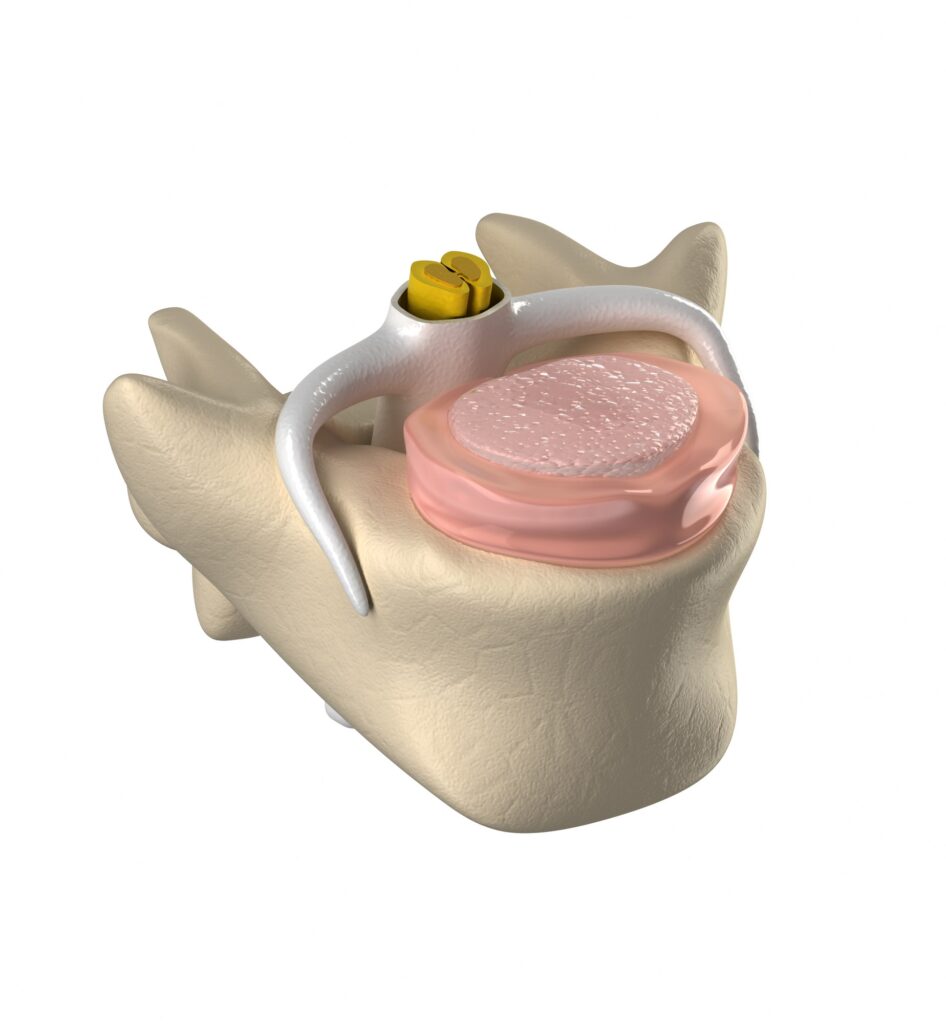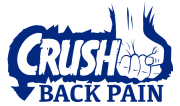Herniated disc exercises are an extremely important part of recovering from disc related lower back pain.
The right exercises are beneficial for herniated discs because they reduce pain, strengthen muscles, improve mobility, and promote healing.
This article outlines research proven herniated disc exercises.
Disc anatomy and how exercise affects discs is explained. Principles that can be applied to any exercise in order to make it disc friendly are covered also.
Herniated Disc Exercises: Examples
- Bird dog
- Side bridge
- Bridge
- Forward alternating lunge
- Reverse alternating lunge
- Walking lunge
- Cossack squat
- Neutral curl-up
- Pull-ups
- Prone press-up
- Fast walking
- Slow running/jogging
This list is by no means exhaustive. It gives you some ideas on where to start. Each exercise loads the spine dynamically, maintains the lumbar spine in neutral, and engages the core.
Dynamic loading of the spine, neutral lumbar spine, and core muscle engagement are the three principles that must be present for an exercise to be healthy for the disc.
Where to start?
The options are many. You can design a simple program based on the list above. Pick three or four exercises and do them daily. Adding walking with two to four of the exercises on the list is another good option.
Walking
Walking in a specific way and even with a light load has been PROVEN to reduce lower back pain and to be beneficial for herniated discs.
If walking is an activity you enjoy it should be part of your program.
If you don’t see yourself doing the exercises on the list or enjoy walking and want to add it to your program, check out these videos on walking to address herniated disc related pain.
More herniated disc exercise options
Make certain to stay away from these types of exercises
STAY AWAY FROM THESE TYPES OF EXERCISES
If you don’t want to figure all this out on your own check out the 12 week Crush Back Pain programs
How and Why Exercise Affects the Disc
Specific types of exercise help herniated discs heal and improve disc health. Other types of exercise aggravate discs and can keep them from healing.
Understanding how to make exercises healthy for the disc and knowing what types of exercise to avoid is especially important.
To understand what types of exercise the disc needs it’s first important to understand the disc.
Lumbar Disc Anatomy
The discs between the vertebrae are comprised of two parts. The annulus fibrosus and the nucleus pulposus.
The outer pink part is the annulus fibrosus. The inner pinkish part that is held in by the annulus in the nucleus pulposus.

The annulus fibrosus forms the outer layer of the disc and is made up of 15 to 25 stacked layers of collagen. Each layer is oriented 60 degrees from the layer adjacent to it. This orientation increases the strength of the disc while allowing flexibility.
The annulus functions as a strong, rigid container to hold the nucleus pulposus in place. In addition to keeping the nucleus contained the annulus fibrosus also stabilizes the spine by resisting torsion, flexion, and extension.
The nucleus pulposus is a gel-like structure in the middle of the disc. It’s made of up water, collagen, and proteoglycans. 66% to 86% of the nucleus is water.
The nucleus functions to spread forces out over the vertebrae above and below it, preventing excessive forces through one part of the vertebrae.
Consequently the lumbar spine can move through considerable ranges and tolerate countless activities without compromising the vertebral bodies.
The disc acts as a force distributor, link, and cushion between vertebral bones. It allows motion while also stabilizing the spine and resisting excessive movement any any one direction.
Whats the difference between a herniated disc and a bulging disc?
A bulging disc simply involves the nucleus pulposus pushing out against the annulus fibrosus, causing the disc to bulge.
A herniated disc involves part of the annulus (outer layer) cracking. The crack allows some of the nucleus pulposus to push out of the disc.
It should be noted that bulging discs and herniated discs are normal age related changes of the lumbar spine. Just as many people WITHOUT lower back pain have bulging discs and herniated discs compared to people with lower back pain.
Exercises that are beneficial for bulging discs are helpful for herniated discs and vice versa. Powerful Bulging Disc Exercises that Destroy Pain covers three effective movements for bulging and herniated discs.
How Does Exercise Help the Disc?
The discs between the vertebrae are avascular, they have minimal to no blood supply. In fact, the intervertebral disc is the largest avascular structure in the body. Consequently the discs obtain nutrients and get rid of waste by fluid diffusing through the endplates of the vertebral bodies.
Movement and exercise result in cyclic loading and unloading of the disc, promoting the diffusion of solutes through the vertebral endplates.
Exercise is essential for disc hydration, nutrition, and for maintaining the balance between water and proteoglycan content. The inside of the disc (nucleus pulposus) contains water and proteoglycans. Exercise maintains the balance between the two.
Research shows that exercise is required to maintain the health and function of lumbar discs.
This is a fact of healthy discs, that are not causing any pain.
If a disc is causing lower back pain, exercise is required to promote the healing process and to strengthen the disc so it can tolerate load and activity.
Exercise improves disc hydration and proteoglycan content and increases disc height. Basically exercise improves disc health and strength. Just like exercise makes bones and muscles stronger, exercise makes lumbar discs stronger.
What Exercises are Best for the Disc?
The exercise should engage the muscles of the trunk and spine (core) with active movement.
So cyclic loading and unloading of the disc with movement is superior to loading the disc statically.
Fast walking or slow running have been shown to be beneficial for the disc. Both of these activities result in cyclic loading and unloading of the disc, with load sharing through the lumbar disc, joints, and muscles.
Fast walking and slow running increase the hydration and glycosaminoglycan content of the disc. The size of the disc is also increased with these activities.
A larger, thicker disc with greater water and glycosaminoglycan content is a healthier, stronger disc.
Simply walking fast or running slow results in a stronger, more healthy disc.
A simple walking program will improve disc health. Walking promotes load sharing between the tissues of the lumbar spine, is the definition of dynamic loading, and decreases lower back pain.
Research shows that walking 90 minutes per week decreases the risk of developing lower back pain. Walking, by itself, is preventative.
An entire rehabilitation program can be based on a walking program. A good goal is to build up to walking 90 minutes or more per week over the course of four to six weeks. Then maintain the walking program to reduce the likelihood of future lower back pain.
Walking and jogging are not the only types of exercise that improve disc health.
Any exercise that results in cyclic loading of the lumbar tissues, maintains the spine in a neutral position, and engages the core musculature is beneficial.
Core stabilization programs have been studied extensively and have been proven to reduce lower back pain.
Exercises to Avoid With a Herniated Disc
Any type of exercise that involves loading the spine and keeping it loaded without movement should be avoided.
Most seated exercises using machines fall into this category.
Exercises that involve twisting the spine with resistance have no place in a herniated disc exercise program.
Flexion with compression will not benefit herniated discs.
Deep squats with lumbar flexion at end range and the leg press machine are examples.
Fast full range sit ups and any rapid movement that involves repetitive end range spinal flexion or extension will not benefit a herniated disc.
How to Turn ANY Exercise into a Herniated Disc Exercise
Understand JUST TWO principles to make any exercise a healthy herniated disc exercise.
- Neutral Lumbar Spine
The lumbar spine is designed to function effectively within a range of motion. The neutral range is basically the natural position of the spine. It’s not too flexed or extended. It’s neutral. This is generally the position the spine is in when you’re standing and comfortable. When exercising the spine should be maintained in this position. The function of the core muscles are to act as a stabilizing back belt to maintain this neutral position during activity.
2. Dynamic Loading
Dynamic loading is cyclic loading. The load changes and is shared between the discs, facet joints, and muscles of the spine. Dynamic loading involves movement of the arms, legs, or both while the spine is kept in a neutral position. The movement results in cyclic loading and unloading of the disc opposed to continuous loading. The loading/unloading optimizes the hydration and nutrition of the disc. This is why fast walking is beneficial for discs. It’s simply cyclic loading with the lumbar spine maintained in a neutral position.
Understanding these principles is MORE Important than Knowing Specific Exercises.
It’s helpful to have repertoire of exercises that you KNOW are healthy for the disc.
It’s even better to apply these two principles to any exercise. This way you can be certain whatever exercise you’re doing is a “herniated disc exercise.”
- Maintain a NEUTRAL lumbar spine
- Focus on exercises that engage the core musculature and result in the spine being relatively stable while the arms, legs, or both move.
Exercise is more effective when it’s done consistently.
Choose exercises or an exercise program that you will stick with. Consistency is key.
FAQ
What exercises can I do with a herniated disc?
Focus on exercises that maintain the lumbar spine in an neutral position. This reduces compression and tensile loading through the disc. Exercises that are dynamic, axial, at slow to moderate speeds are beneficial for lumbar disc health. Examples include:
- Bird dog
- Side bridge
- Bridge
- Forward alternating lunge
- Reverse alternating lunge
- Walking lunge
- Cossack squat
- Neutral curl-up
- Pull-ups
- Prone press-up
- Fast walking
What exercises are good for herniated disc?
Exercises that allow the lumbar spine to maintain the natural lordotic curve. Lunges, shoulder presses, bench presses, pull-ups, dips, lat pull downs, rows, and squats can all be done with a herniated disc. The key is keeping the lumbar spine from flexing too much. Lumbar flexion exacerbates herniated discs. Any exercise can make a herniated disc more painful if the lumbar spine is allowed to flex to end-range or allowed to flex repeatedly.
On the other hand, almost any exercise can be made disc friendly if a few simple principles are understood.
What exercises help herniated disc?
Exercises that engage the core muscles with active movement while keeping the lower back in a neutral position help herniated discs. Neutral simply means not too flexed (bent forward) or extended (bent backward). Dynamic, cyclic loading is good for herniated discs because this type of loading promotes load sharing through the discs, joints, and muscles. Dynamic, cyclic loading also promotes solute transport through the endplates. Load sharing and solute transport promote disc healing and disc health. Examples of exercises that involve dynamic, cyclic loading include:
- Fast walking
- Lunge variations
- Slow running
- bird dog
- neutral curl-up
What exercises to avoid with herniated disc?
Avoid exercises that flex the lower back to end-range. Avoid exercises that repeatedly flex the lumbar spine. Avoid exercises that load the lumbar spine in a flexed position. Herniated Disc? Quit These Exercises Today outlines the types of exercises to avoid with a herniated disc.
Are lunges ok for herniated disc?
Yes, lunges are typically well tolerated for a herniated disc. Lunges meet the three criteria for a disc friendly exercise; dynamic loading of the spine, neutral lumbar spine, core muscle engagement. Make certain to keep the lower back neutral (not too flexed or extended). Lumbar neutral is typically the natural position of the lower back in standing and the position of greatest comfort.
Can you squat with a herniated disc?
Yes, the most important variable is maintaining the lumbar spine in neutral. If you squat too deep your lower back will round out. This compresses the disc and can exacerbate a herniation. If you keep your lower back neutral and do not round out at the bottom of the squat then squats are beneficial and can be used as a therapeutic exercise. This Lower Back After Squats video explains how to squat while keeping your lumbar spine neutral.
References
Chan SC, Ferguson SJ, Gantenbein-Ritter B. The effects of dynamic loading on the intervertebral disc [published correction appears in Eur Spine J. 2011 Nov;20(11):1813]. Eur Spine J. 2011;20(11):1796-1812. doi:10.1007/s00586-011-1827-1
Belavý DL, Albracht K, Bruggemann GP, Vergroesen PP, van Dieën JH. Can Exercise Positively Influence the Intervertebral Disc? Sports Med. 2016 Apr;46(4):473-85. doi: 10.1007/s40279-015-0444-2. PMID: 26666742.
Sampson SL, Sylvia M, Fields AJ. Effects of dynamic loading on solute transport through the human cartilage endplate. J Biomech. 2019 Jan 23;83:273-279. doi: 10.1016/j.jbiomech.2018.12.004. Epub 2018 Dec 8. PMID: 30554819; PMCID: PMC6326858.
Belavý DL, Quittner MJ, Ridgers N, Ling Y, Connell D, Rantalainen T. Running exercise strengthens the intervertebral disc. Sci Rep. 2017;7:45975. Published 2017 Apr 19. doi:10.1038/srep45975
Park SM, Kim GU, Kim HJ, Kim H, Chang BS, Lee CK, Yeom JS. Walking more than 90minutes/week was associated with a lower risk of self-reported low back pain in persons over 50years of age: a cross-sectional study using the Korean National Health and Nutrition Examination Surveys. Spine J. 2019 May;19(5):846-852. doi: 10.1016/j.spinee.2018.11.007. Epub 2018 Nov 15. PMID: 30448632.
Majeed A S, Ts A, Sugunan A, Ms A. The effectiveness of a simplified core stabilization program (TRICCS-Trivandrum Community-based Core Stabilisation) for community-based intervention in chronic non-specific low back pain. J Orthop Surg Res. 2019 Mar 22;14(1):86. doi: 10.1186/s13018-019-1131-z. PMID: 30902095; PMCID: PMC6431028.



